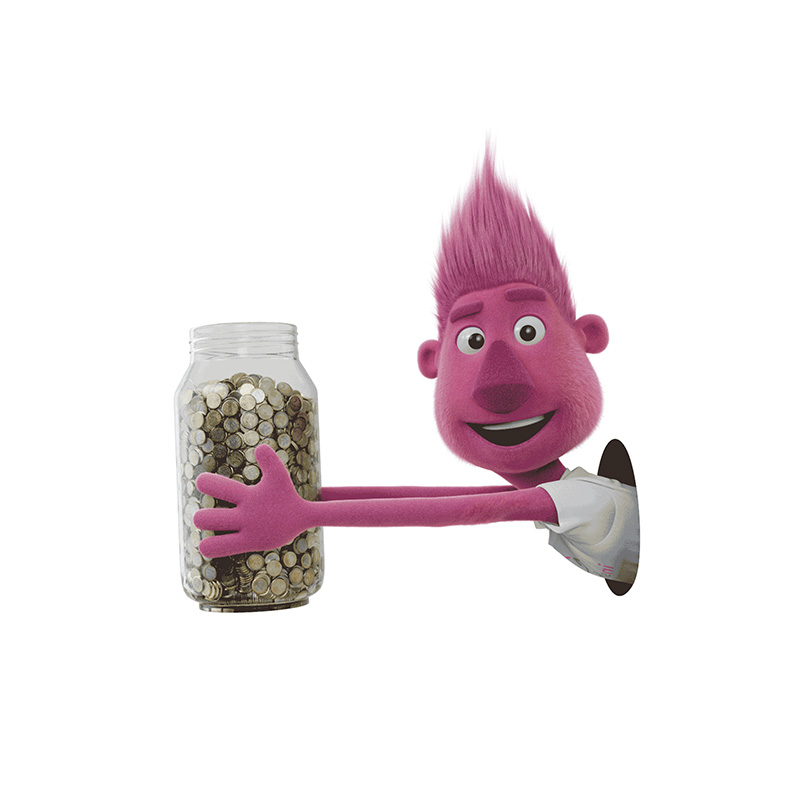

InShared started 13 years ago as one of the first online insurers. Everything had to be as easy as possible: a consumer should be able to do without an advisor. Online applications were already standard, but making adjustments was not yet.
With a focus on self-service, they believed that a customer service department was unnecessary. Yet the questions kept coming in. To answer questions, but minimise them where possible, Marco Ganzevles became responsible for Customer Service.
Nowadays, he also focuses on Customer Experience in Marketing & Sales.
Management wondered, "Why are questions being asked? After all, we made everything available online: from requests to adjustments."
Marco's mission was to find out where the questions were coming from, and how they could resolve them. At the time, everything was still done via Outlook, so analysing wasn't particularly easy. For many questions, they were able to find a simple solution. One example involved downloading a new "green card". Because customers have to print these themselves, InShared had made it black and white. This was confusing for many customers, and so they started asking questions. The solution? The "green card" turned green again.
The fact that InShared believes in the power of self-service is also demonstrated by their use of a smart chatbot for more than 10 years already. They look at customer contact very differently than the competition. InShared listens to the wishes of the customer. You can't call them, but you can reach them via the chatbot, email, Facebook, and Twitter for example. They are also testing live chat. Because what does the customer want? Right, an answer to the question. And preferably immediately. You can find the answers yourself, InShared explains well how.
Still can't figure it out? Then you can send an e-mail. Even though this is not an instant answer. That's why they are considering a handover from chatbot to a human live employee.
Customers not only want an answer instantly; they also want the right answer. A familiar frustration with customer service is having to repeat your question. You immediately want to be understood and to get the right answer. Not being called back by a colleague, or emailing back and forth because someone doesn't understand you. A smart, well-designed chatbot can answer many questions correctly within one conversation. You do have to maintain your bot properly, Marco explains. Keep checking: which questions are asked and where is the correct answer lacking? Based on this, you can adjust and improve your dialogues.
InShared continuously monitors the results of the chatbot. Not only with their own employees, but also with an external CRO agency. They also give input to improve more. Sometimes this is about answers or dialogues, but other times it is about helping the customer realise they are talking to a chatbot. In the early days, customers thought Fleur (InShared's chatbot) was a person. They started the conversation with "Hi Fleur" and sent very elaborate messages. That makes it harder for a bot to understand. To get to the question faster, InShared ran several CRO tests. Aside from content optimisations, the appearance and name have been changed. There is no name anymore, but the character from the commercial has become the chatbot.
After a while, the chatbot proved to have accrued so much knowledge that it got the team thinking.
"What we do on the front end, can't we do the same on the back end? The front-end bot is so smart that it can recognise the question in numerous ways and give the right answer. Why can't we leverage this internally as well?"
So they did. Since then, InShared built an internal knowledge base using Conversational AI Cloud with the same database and functionalities as the customer-facing chatbot. Employees can search for the right answer, see if it's correct, and give the best answer to the customer. At all these steps, they can provide feedback or modify answers. With everyone involved, the best answer is always available. The biggest advantage? All employees (inexperienced or experienced) can easily get started and provide feedback. As a result, the internal knowledge base, and the chatbot on the front end, are continuously improved.
"One tool that allows us to improve quickly on every aspect. One that allows us to help customers, and employees, with the best possible answers." - Marco Ganzevles, InShared
For Marco, customer service is all about "making it easier". Getting answers easier, or making support smoother. No matter how you do it, it's never finished. After all, things can always be easier. This also applies to the chatbot: maintenance is necessary to keep it working properly. Developments, and customers' expectations, are going fast. "Think of it like a house: if you don't do anything, it will still be there in five years. But if you haven't done anything in 10 years, it will start to crumble. With a chatbot, this happens even faster: you have to give 150% every day to keep improving. The system can do anything, but the organisation has to contribute. ", Marco Ganzevles explains.
The question that gets asked a lot at InShared: how effective is the chatbot? Over the past 10 years, there have been different opinions and ideas. New colleagues brought new questions and discussions, and topics such as the 'AI hype' were challenged. Several business cases were needed to show all the things the bot is doing. Nevertheless, Conversational AI remains a success for InShared, along with the necessary learnings. Marco says: "Behind every successful bot is a team: people with time, energy, and knowledge to make it better. Providing customers with the right information and helping them forward." He compares Conversational AI to a Ferrari - you have to gear everything up to get the most out of it.
"We have a Ferrari, but let it drive on a dirt road. Then we are surprised that it doesn't reach 230. The road has to be good to be able to drive fast. What if we pave the road? Then we'll go that fast too. Conversational AI has demonstrated as much." - Marco Ganzevles, InShared
Create a smart chatbot for internal and external purposes with Conversational AI Cloud, just like InShared.
CM.com has multiple chatbot solutions. Explore all options to choose the right solution for your business.
Not sure if you want a chatbot? There's more! Communicate with your customers via the all-in-one customer service software, or just the preferred channel.
Select a region to show relevant information. This may change the language.


